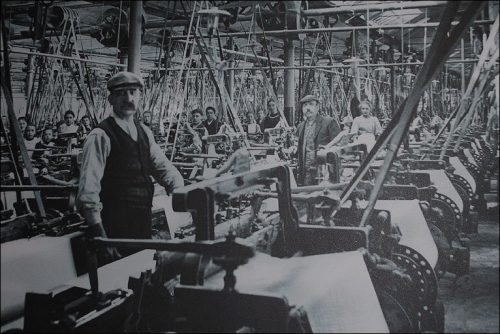This blog post on “Industrial Electrification and the Technological Illiteracy of the U.S. Army Air Tactical School 1920-1940” marks the new year with a departure from past history columns I’ve written for Chicagoboyz in that it is exploring a theme I refer to as “The Bane of Technologically Illiterate Military Leaders.”[1] As such, it will not be fully fleshed out with sources and notes. Consider it a ‘first draft’ of an article I’ll post later.
The issue with ‘Technologically Illiterate Military Leaders‘ I’ll be exploring in this and future articles is that such leaders tend to make the same classes of mistakes over and over again. And when those military leaders reach flag rank on the bones of theories and doctrines that fail the test of combat through their technological illiteracy. They then bury the real reasons why those doctrines failed behind walls of jargon and classification to avoid accountability for those failures.
Where you can see this pattern most easily in the historical record is with the US Army Air Corp Tactical School (ACTS) “Industrial Web” theory of strategic bombing and it’s inability to understand what the changes that industrial electrification caused had meant to this theory. The “Industrial Web” theory stated there were “choke points” in an industrial economy which bombing would cause a disproportionate reduction in enemy nation’s weapons production supporting total war.[2]

On the surface, this was a logical sounding intellectual construct. In practice, it failed miserably at places like the 14 October 1943 second Schweinfurt raid on German ball bearing factories and the Yawata Strike, the start of the early B-29 campaign on Japanese Coke ovens.
The unavoidable, in hindsight, issue for USAAF leaders trained in the Air Corps Tactical School in the period between 1920 and 1940 was that it spanned the change in industrial infrastructure from steam engine, line shaft and power belt to electric motor powered mass production.[3] Thus the ACTS theorists had a fundamentally flawed understanding of industrial economies vulnerability to aerial bombing going into World War 2 (WW2) because they were technologically illiterate regards the radical change industrial electrification caused.
This flawed understanding was that roof damage in a factory with line shaft and drive belt power transmission — whether steam or electric driven — stops all production until the roof-mounted line shaft is re-seated or replaced. This was not the case for electric motor delivered power located on the factory floor. The technological illiteracy here was not seeing the fact that electric motors fundamentally disassociated factory production processes from factory physical structure. [4]
The basic idea that ACTS theorists had at the time was that their “Industrial Web” was a serial system where every component had to work to produce an effect. Thus ACTS theorists fundamentally believed in the “weak link” theory of reliability, rather than the need to obliterate all key components that a parallel, or complex serial/parallel system, with redundancy required. The point failure weakness of line shaft and drive belt industrial infrastructure fit this “serial system with a weak link” belief system of ACTS theorists to a tee. [5]
So when you read wartime USAAF bomb damage assessment reports from the WW2 Combined Bombing Campaign giving such and such percentages of factory roof’s destroyed being used as a means of determining whether production there was knocked out. You are seeing a “weak link” short hand based upon line shaft power transmission infrastructure assumptions.
When you read later post-war bomb damage surveys reading “…that machines and machine tools were damaged far less severely than factory structures,” you are seeing a USAAF staffer dodging those pre-WW2 “Industrial Web/Weak Link” line shaft infrastructure assumptions by not using the term at all.
This sort of language shift to hide real world meanings with jargon, thus neatly avoiding accountability for failure in combat, is one of the classic ‘poker tells’ in researching ‘Technologically Illiterate Military Leaders‘.